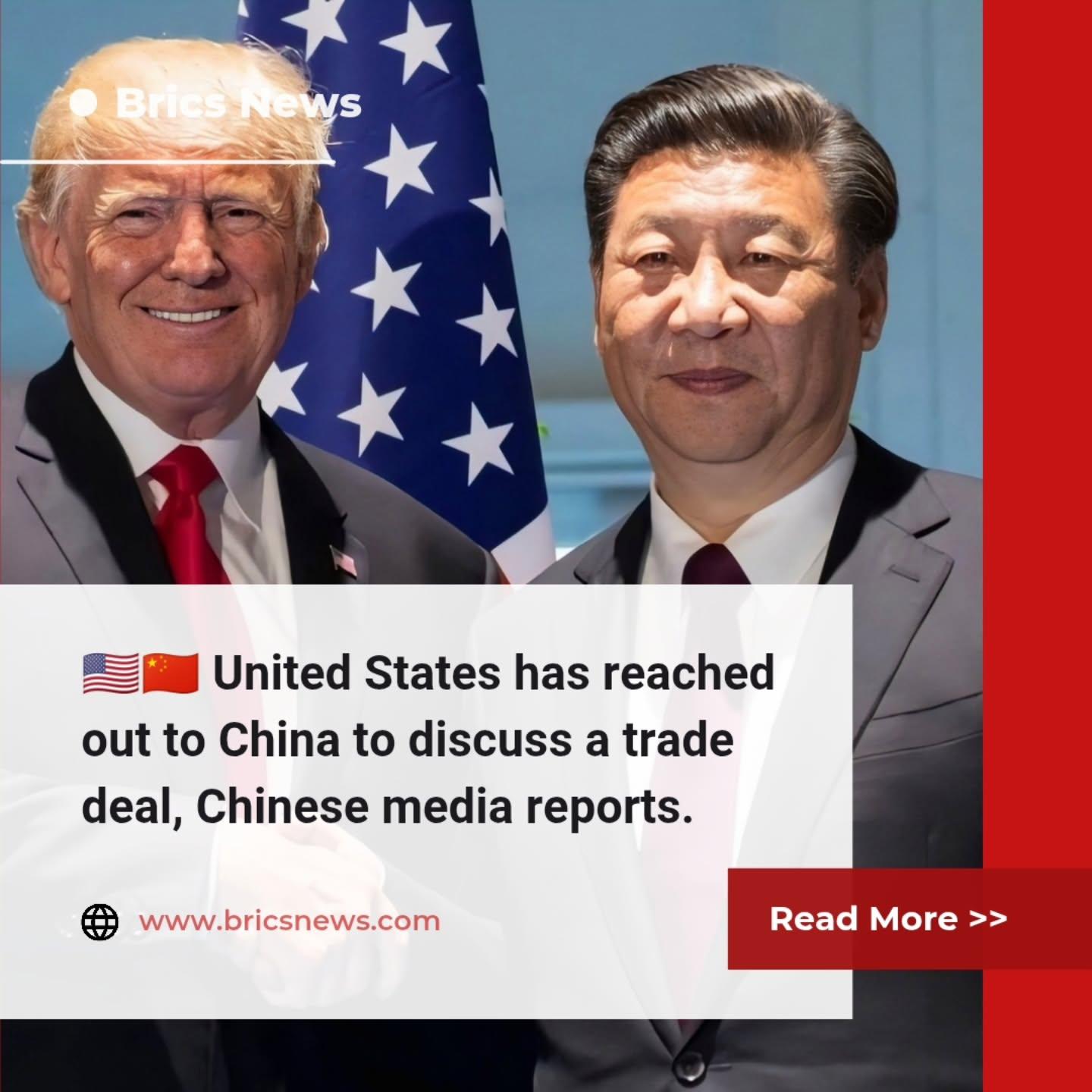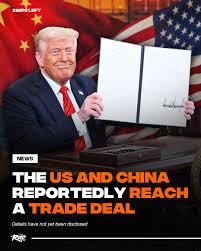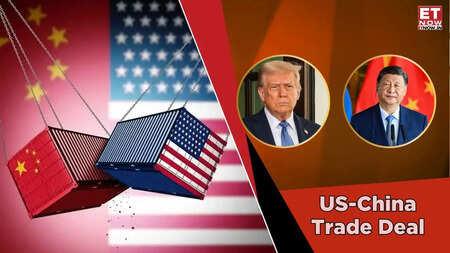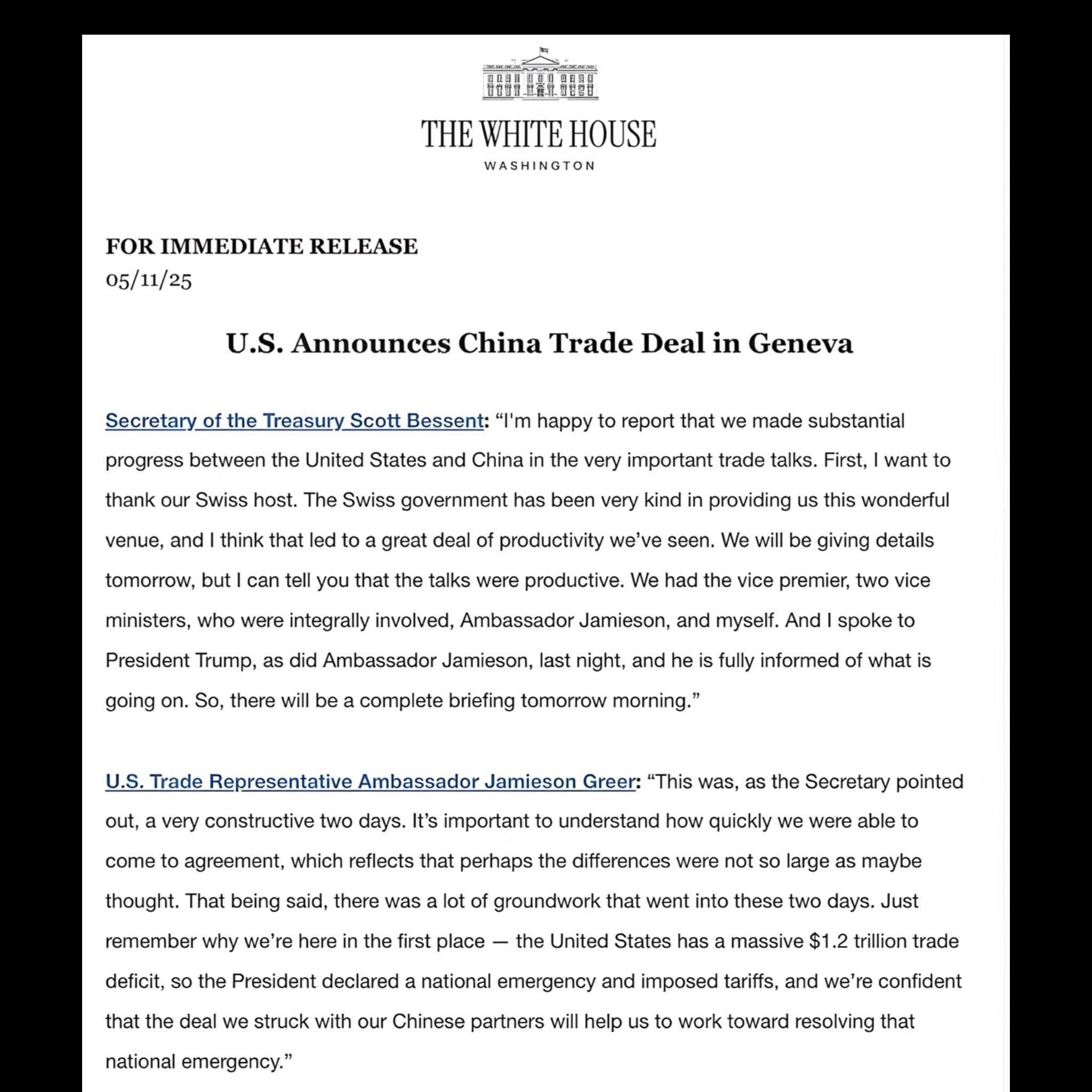U.S. and China Announce Trade Deal, Signaling Tariff De-Escalation
On May 12, 2025, the White House announced a trade deal with China following two days of high-stakes negotiations in Geneva, Switzerland, marking a significant step toward de-escalating the ongoing trade war between the world’s two largest economies. The agreement, hailed as a “total reset” by President Donald Trump, comes after months of escalating tariffs that disrupted global markets and strained bilateral trade worth $600 billion annually. While both sides have touted “substantial progress,” details remain scarce, with a joint statement expected later today.

Breakthrough in Geneva
The negotiations, held at the residence of Switzerland’s UN ambassador, involved U.S. Treasury Secretary Scott Bessent and U.S. Trade Representative Jamieson Greer, alongside Chinese Vice Premier He Lifeng. The talks followed Trump’s imposition of 145% tariffs on Chinese imports in April, prompting China’s retaliatory 125% duties on U.S. goods. These levies led to a 60% plunge in U.S.-China trade, with U.S. imports from China projected to drop 75-80% in 2025’s second half, according to JPMorgan estimates.

Bessent described the talks as “productive,” noting “substantial progress” toward addressing the U.S.’s $1.2 trillion global trade deficit, including a $295 billion deficit with China. Greer emphasized the speed of the agreement, suggesting that differences were “not as large as thought.” Chinese officials echoed the optimism, with He Lifeng calling the talks “candid, in-depth, and constructive,” culminating in an “important consensus.” Both sides agreed to establish a “China-U.S. economic and trade consultation mechanism” to address ongoing issues.

Tariff Reductions and Terms
While specifics are pending, posts on X and media reports indicate a temporary tariff reduction. The U.S. will reportedly lower tariffs on Chinese goods from 145% to 30%, and China will reduce its retaliatory tariffs from 125% to 10% for a 90-day period. Additionally, a 24% tariff on $300 billion worth of goods will be suspended, though a 10% baseline tariff remains. These measures aim to stabilize trade, but experts caution that the deal is not a full resolution, with systemic issues like Chinese subsidies and intellectual property disputes unresolved.

China’s trade negotiator, Li Chenggang, hinted at a forthcoming statement, saying, “If the dishes are delicious, timing is not a matter… it’s going to be big, good news.” The deal follows Trump’s Friday suggestion of an 80% tariff as a target, a significant concession from the current rates.
Economic and Global Impact
The agreement has sparked cautious optimism in financial markets, with stocks in China, Hong Kong, and the U.S. expected to rise. The trade war has already contracted U.S. GDP, with a 0.3% annualized decline in Q1 2025, and hit Chinese manufacturing, which fell to its lowest level since December 2023. Businesses on both sides, from Chinese exporters like Sorbo Technology to U.S. retailers, have faced stockpiling and rising costs.
World Trade Organization Director-General Ngozi Okonjo-Iweala called the talks a “significant step forward,” urging both nations to build on the momentum. However, analysts like Dmitry Grozoubinski warn against over-optimism, noting that the deal is “far from done” and may not restore pre-tariff trade levels. Even a halved tariff rate could reduce bilateral trade by 50%, according to the Peterson Institute.
Political Context and Challenges
Trump framed the deal as addressing a “national emergency” caused by the trade deficit, a priority since his April 2 tariff announcement. The rapid agreement, built on pre-Geneva groundwork, contrasts with earlier tensions when China denied talks were underway, calling Trump’s claims “fake news.” Beijing’s participation reflects economic pressures, including an 8.1% export surge to Southeast Asia offsetting a 21% drop to the U.S.
Critics argue the deal is a temporary pause rather than a comprehensive solution. Posts on X highlight skepticism, with some calling it “not a trade deal” but a reset for further talks. Others view it as a U.S. concession, given the significant tariff cuts. The deal’s success hinges on future consultations, with unresolved issues like China’s export controls on critical minerals and U.S. concerns over fentanyl and technology transfers.
Looking Ahead
The U.S.-China trade deal, while a milestone, is an “important first step,” as Chinese officials noted. The joint statement expected on May 12 will clarify the terms, but businesses and markets await concrete details to assess its impact. As both nations navigate economic fallout and geopolitical rivalries, the consultation mechanism offers a framework for dialogue, though deep-seated frictions remain. For now, the agreement signals a thaw in the trade war, providing relief to a global economy battered by uncertainty.





